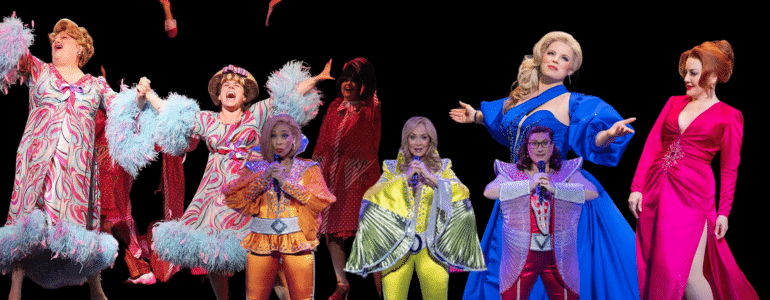What theater and real estate have in common.
Last weekend, I took a trip out to Minnesota to catch a few shows at the historic History Theatre in St. Paul.
(By the way, I’d put Minneapolis/St. Paul as one of the top theater cities in the country…perhaps nudging out LA for the third spot behind Chicago and, of course, NYC.)
The History Theatre has a fantastically specific mission statement: to produce new and existing works that explore Minnesota’s past. And they’ve been doing it for almost 40 years, creating 100+ original plays and musicals from the diverse stories that make up the state’s history, including: Sisters of Swing, the story of The Andrews Sisters who got their start at a talent show in Minneapolis, A Piece of the Rope, the story of the first execution in the state (which happened to be a woman), and Teen Idol: The Bobby Vee Story (set to return to the theater next fall with a star-making performance from Tyler Michaels, an Aaron Tveit-like local).
What I love about their mission is two fold:
First, they produce theatrical documentaries. And, as you probably know from the amount of documentaries you’ve been consuming on Netflix (you can admit it), the appetite for true stories from audiences has jumped in the last ten years (the Cannes Film Festival reports that the number of documentaries in their slate has doubled since 2008).
Second, they understand that what makes real estate valuable can also make theater valuable. Location, location and location.
By choosing to produce “hometown” shows, the audience comes in with an interest and a connection to the material. They’re already engaged because they share something in common with the story on stage. It’s about where they come from…or where they live. And that always perks up an ear.
And regardless of the story, there’s a sense of identification and pride in the connection to that location, which makes the audience predisposed to like the show. Because not liking it means not liking where they’re from. It’s the consistency principle, as taught by Dr. Robert Cialdini. The audience has chosen to reside in this home state. Therefore they will support that decision by supporting the show on stage, whether they know why or not.
Besides, everyone knows a few local references also kill. In one of the shows I saw, a line like “They came to Duluth for the night life,” drew laughter and then applause.
On top of the buy-in from the audience before they even see the shows, Artistic Director Ron Peluso told me that he also has subscribers and locals suggesting stories that he can adapt for the stage. “You should do the story about my grandfather,” and “Do you know about the guy who almost started a war with Canada? Let me tell you…”
It’s no wonder that the theater’s reading series when they debut new work is SRO.
What are the takeaways for you? If you run a theater, you might want to think about creating your own show based on your city or state’s history for all the reasons above. (Need help? I’d contact The History Theatre – they’re a well-run factory for this kind of material.)
And if you’re developing a show for New York…or Broadway?
Well, let me put it this way…tell me what these musicals have in common:
42nd St.
Rent
West Side Story
Hello, Dolly!
Hair
A Chorus Line
Annie
Little Shop of Horrors
Ragtime
Hamilton
Avenue Q
Thoroughly Modern Millie
On The Town
And so many more . . .
You got it. They all take place in New York City.
For our locals and for our tourist audiences, there is something about seeing a show in this city that takes place in this city.
So, I’d not only aspire to have a penthouse on Central Park South. But I’d aspire to have a musical set there as well.
Podcasting
Ken created one of the first Broadway podcasts, recording over 250 episodes over 7 years. It features interviews with A-listers in the theater about how they “made it”, including 2 Pulitzer Prize Winners, 7 Academy Award Winners and 76 Tony Award winners. Notable guests include Pasek & Paul, Kenny Leon, Lynn Ahrens and more.













